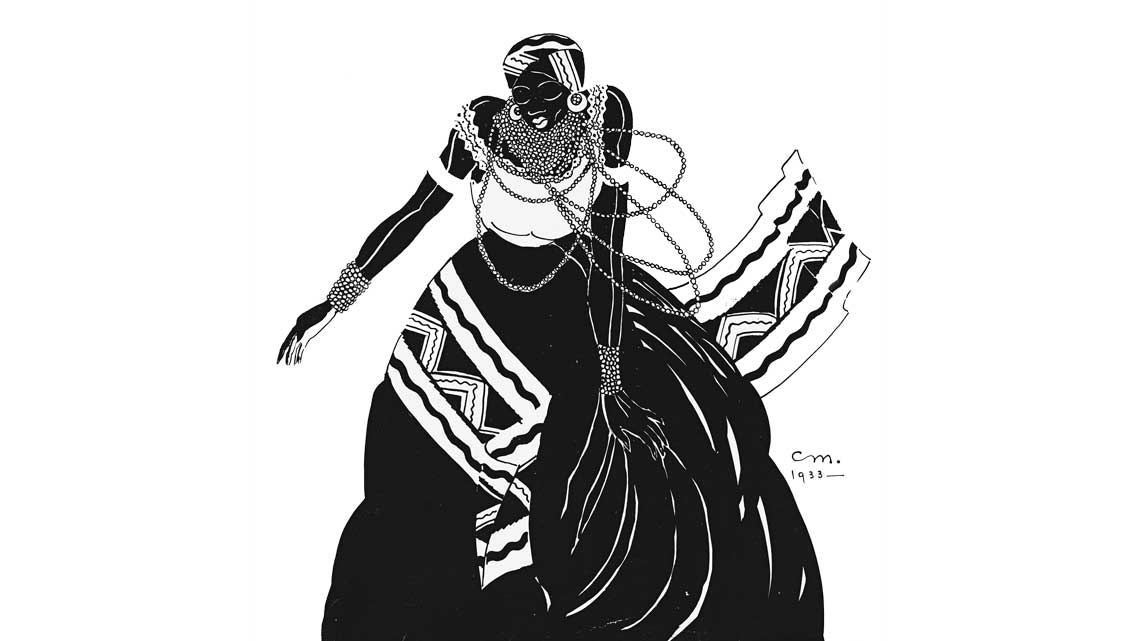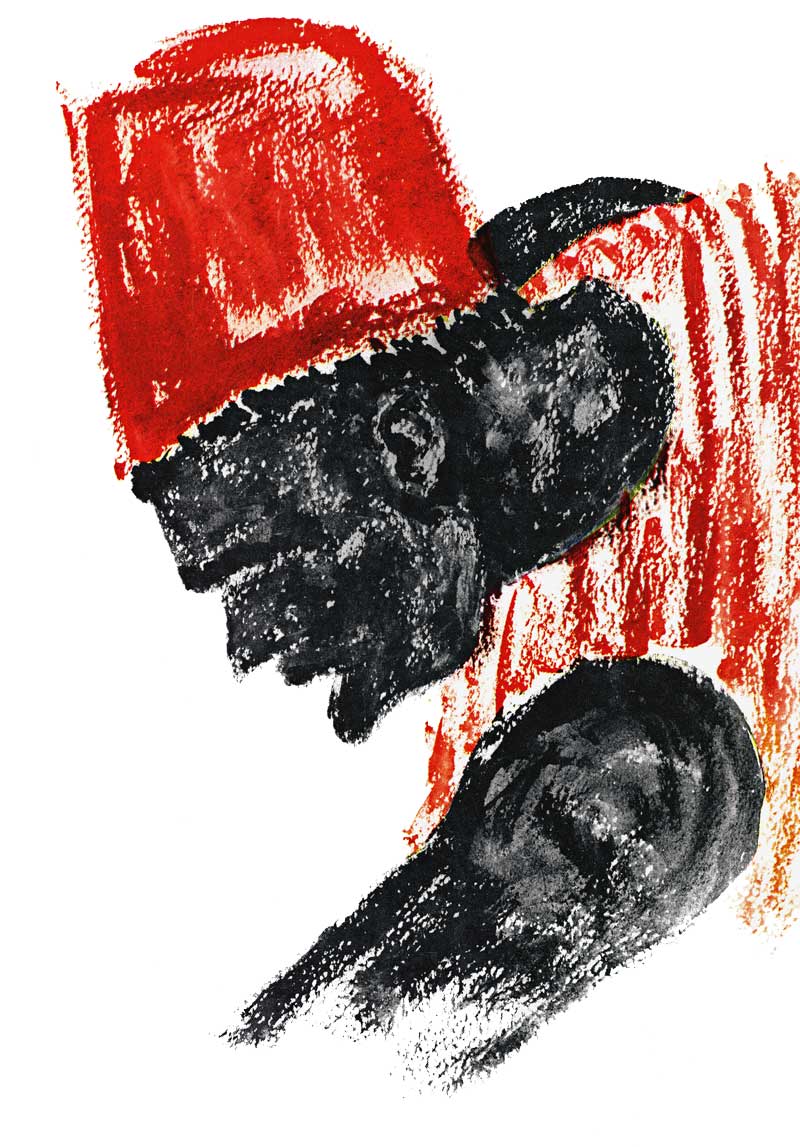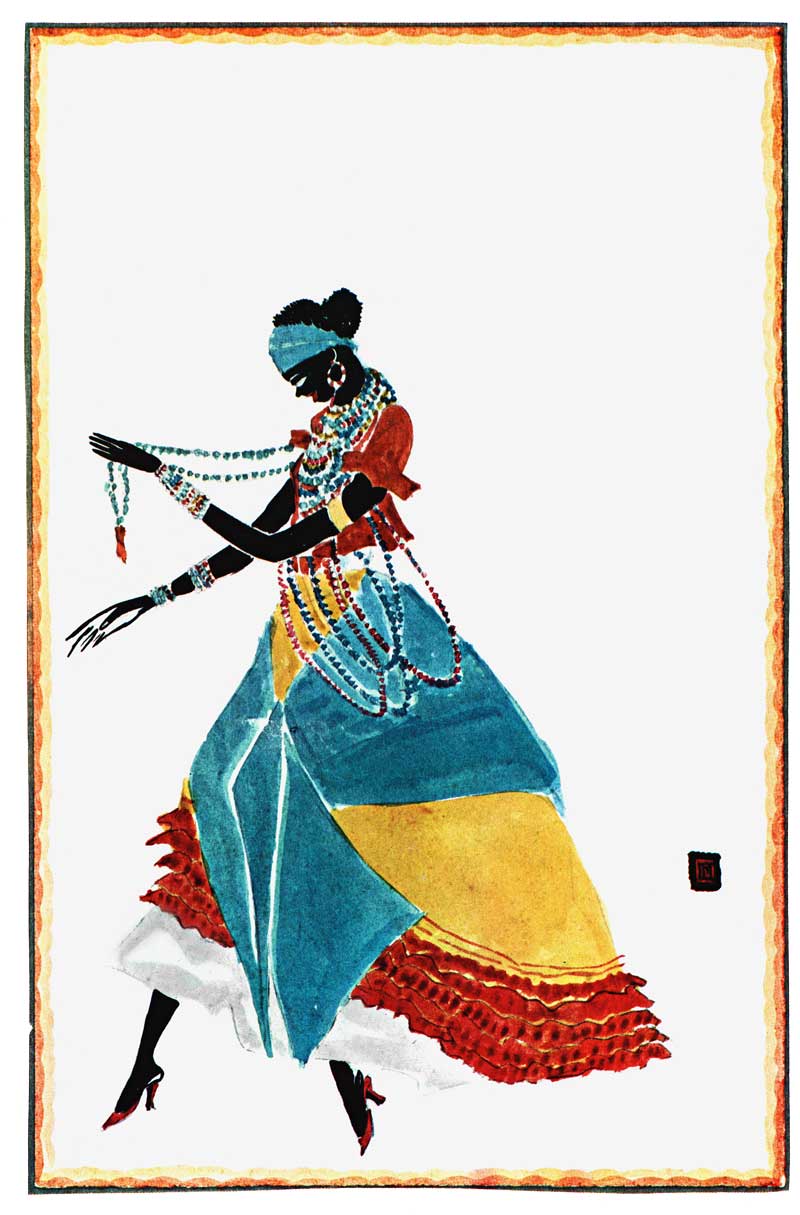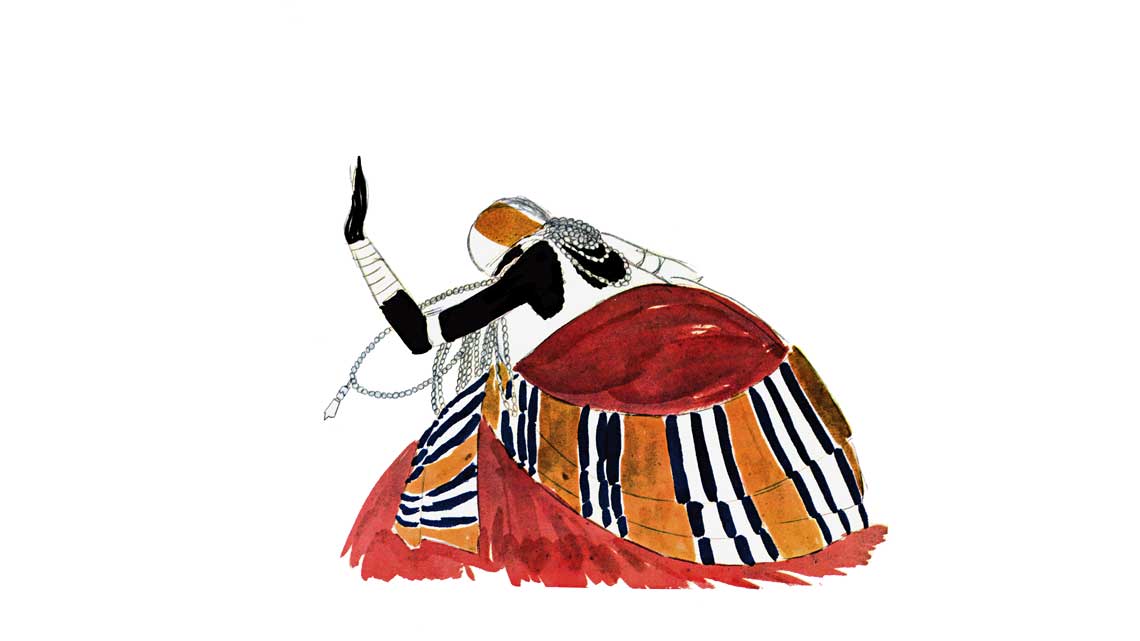One hundred years ago, back when women did not even have the right to vote in Brazil, a 19-year-old girl dared to be different. Never one to mince words, this young woman was a secretary at the founding meeting for the Legion of Brazilian Women, a women’s rights organization, at which occasion she challenged both a monsignor and a priest in a ceremony held in the Rio de Janeiro Association of Commerce. “These churchmen, who had been invited by a group of Catholic women, shocked the audience when they began listing the different kinds of punishment some of the women would experience in hell if they did not convert to Catholicism,” reports Valéria Lamego, a visiting researcher at the Advanced Program of Contemporary Culture, at the Federal University of Rio de Janeiro (UFRJ). “In the ensuing chaos, Cecília Meireles took the floor and warned: ‘The Legion of Brazilian Women will be a lay institution that welcomes people of all creeds. I am a free thinker.’”
The woman described above hardly fits the fragile image usually associated with the poet Cecília Meireles (1901–1964). “Few really know the history of Cecília Meireles, a woman who always worked and fought for her ideas,” observes Lamego. “Her poetry may not have been political, but she was.” By uncovering little-known aspects of the author’s life and work, over the past four decades researchers, such as Lamego and Ana Maria Domingues de Oliveira, have contributed to the dismantling of stereotypes surrounding Meireles—who was a folklorist, playwright, literary critic, teacher, journalist, and translator of authors including Virginia Woolf (1882–1941), Federico García Lorca (1898–1936), and Rabindranath Tagore (1861–1941). She was also a visual artist, as proven by the drawings that illustrate this article, which are also included in Batuque, Samba e Macumba: Estudos de Gesto e de Ritmo 1926–1934 [Batuque, Samba, and Macumba: Studies on Gesture and Rhythm 1926–1934], originally published in 1983 by Funarte, thanks to the sponsorship of a banking institution, and which was reprinted for a third time in late 2019 by Global Editora. “Cecília Meireles was not just a great poet, but a multifaceted intellectual,” says Oliveira, a retired professor from the College of Letters and Sciences of São Paulo State University (FCL-UNESP), Assis campus. “Unfortunately, even in academics, she became stereotyped as an ethereal and alienated poet, who wrote ‘women’s poetry’—considered less important, according to this point of view.”
 Courtesy of Global EditoraProfessor João Adolfo Hansen, who retired from the School of Philosophy, Languages and Literature, and Human Sciences at the University of São Paulo (FFLCH-USP), believes Meireles’s work is hard to pin down using a single literary formula, which may have hindered how it is perceived by academic critics. “She is recognized as an excellent modern poet with great technical mastery, but her tone is more musical, melancholy, contemplative; it does not have the most obvious modernist traits, such as deconstruction of tradition, being more similar instead to the symbolism of the late 19th century,” according to Hansen, who authored Solombra, ou a Sombra que Cai Sobre o Eu [Solombra, or the Shadow that Falls on the Self; Editora Hedra, 2005], an essay on Meireles’s homonymous 1963 work. “Beginning in the 1950s, critics—at least from São Paulo—were heavily influenced by the harshness of concretism, which did not understand the musicality of Cecília Meireles’s work. Perhaps they expected of her something she never was or even wished to be. She had her own singular voice, but ended up labeled a conservative, alienated, outdated poet.”
Courtesy of Global EditoraProfessor João Adolfo Hansen, who retired from the School of Philosophy, Languages and Literature, and Human Sciences at the University of São Paulo (FFLCH-USP), believes Meireles’s work is hard to pin down using a single literary formula, which may have hindered how it is perceived by academic critics. “She is recognized as an excellent modern poet with great technical mastery, but her tone is more musical, melancholy, contemplative; it does not have the most obvious modernist traits, such as deconstruction of tradition, being more similar instead to the symbolism of the late 19th century,” according to Hansen, who authored Solombra, ou a Sombra que Cai Sobre o Eu [Solombra, or the Shadow that Falls on the Self; Editora Hedra, 2005], an essay on Meireles’s homonymous 1963 work. “Beginning in the 1950s, critics—at least from São Paulo—were heavily influenced by the harshness of concretism, which did not understand the musicality of Cecília Meireles’s work. Perhaps they expected of her something she never was or even wished to be. She had her own singular voice, but ended up labeled a conservative, alienated, outdated poet.”
Truthfully, the author herself may have contributed to her own image as an alienated artist when, for example, she stated to O Cruzeiro magazine in the 1950s that her main flaw was being “rather absent from the world.” Anélia Montechiari Pietrani, coordinator of the Interdisciplinary Center for the Study of Women in Literature (NIELM), at the UFRJ School of Language and Literature, explains that critics were even less receptive to Meireles’s work in the 1970s. This was when the essay Literatura e Mulher: Essa Palavra de Luxo (Literature and Women: That Fancy Word) (1979) was written by Rio de Janeiro poet Ana Cristina Cesar (1952–1983), on the works of Cecília Meireles and the Minas Gerais poet Henriqueta Lisboa (1901–1985) and the ideas of “feminine poetry,” the space occupied by women in literature, and how their work is perceived by critics and readers. In the essay, Cesar criticizes the “always erudite and fine” nature of this poetry, which “is clean and tenuous and ethereal,” and speculates whether “there is not, behind this fluid conception of poetry, a symptomatic silencing of feminine topics or the possibility of a modern women’s poetry—violent, quarrelsome, tacky, omnipotent.” In Pietrani’s assessment, it is “a piece written in the heat of the origins of the feminist movement in Brazil, which at that time rejected the lyricism of Cecília Meireles.”
As a result, scholars say, the ill will towards Meireles’s literary work also eclipsed her performance in other fields. A turning point came with Lamego’s 1995 master’s dissertation, defended at UFRJ, published the following year with the title A Farpa na Lira: Cecília Meireles na Revolução de 30 (The Barb in the Lyre: Cecília Meireles in the Brazilian Revolution of 1930) (Editora Record). The study uncovered the poet’s fierce politics in the education section of the Rio de Janeiro newspaper Diário de Notícias from 1930 to 1933. In the articles, Meireles acts as a spokesperson for the concepts of The New School, developed by educators and thinkers, such as the American John Dewey (1859–1952) and established in Brazil by intellectuals, such as Fernando de Azevedo (1894–1974) and Anísio Teixeira (1900–1971). The poet soon joined her countrymen and was one of the signatories of the New Education Manifesto to the Government and the People (1932). “Cecília Meireles fiercely defended public, secular, progressive education—all without losing her good humor and irony,” says Lamego. “In the 1930s, she discussed in the newspaper the inclusion of philosophy and music classes in the curriculum and was vehemently against mandatory religious teaching in schools, established by the Catholic Church and [then-president] Getúlio Vargas [1882–1954]. Cecília Meireles, initially a supporter of Vargas, was soon disappointed by the direction taken by his administration and even called him ‘lord dictator’ in the newspaper, but she lost the argument and was removed from the newspaper.”
 Courtesy of Global EditoraMeireles, in fact, never stopped writing for the press. It is estimated that she wrote over 2,000 chronicles from 1920 to 1964—the last of which was published in the newspaper Folha de S.Paulo two months before her death that same year, from cancer. “In addition to education, folklore and literature, she addressed topics including travel, animals, food, artists, and friends,” shares Lamego. Much of this material remains unknown to most people, according to Oliveira. “Not just her chronicles, but, for example, the interviews she conducted as a journalist and the many letters she exchanged with individuals, such as the Portuguese writer Armando Côrtes-Rodrigues [1891–1971],” laments the expert. “Much of Cecília Meireles’s work has not yet been published in books due to copyright issues, as it belongs to the poet’s family.”
Courtesy of Global EditoraMeireles, in fact, never stopped writing for the press. It is estimated that she wrote over 2,000 chronicles from 1920 to 1964—the last of which was published in the newspaper Folha de S.Paulo two months before her death that same year, from cancer. “In addition to education, folklore and literature, she addressed topics including travel, animals, food, artists, and friends,” shares Lamego. Much of this material remains unknown to most people, according to Oliveira. “Not just her chronicles, but, for example, the interviews she conducted as a journalist and the many letters she exchanged with individuals, such as the Portuguese writer Armando Côrtes-Rodrigues [1891–1971],” laments the expert. “Much of Cecília Meireles’s work has not yet been published in books due to copyright issues, as it belongs to the poet’s family.”
Sérgio Alcides Pereira do Amaral, from the School of Language and Literature of the Federal University of Minas Gerais (FALE-UFMG), recently came across some of this material. He is currently studying the author’s work as a contributor to the Rio newspaper A Manhã during the dictatorship of the New State (1937–1945), when she also published the poetry collections Vaga Música (Vague Music) (1942) and Mar Absoluto e Outros Poemas (Absolute Sea and Other Poems) (1945). The scholar states that, in addition to weekly chronicles, whose content was more literary in nature, Meireles also had a near-daily column from 1941 to 1943, called “Professors and Students.” In it, she resumed her defense—begun in the previous decade—of a public, secular, and emancipatory education. “Her tone, however, is more peaceful; she does not actively seek to clash with the regime. At the time, Cecília Meireles also directed the magazine Travel in Brazil [1941–1942], published in English and established by the Press and Propaganda Department of the Vargas administration in an effort to attract foreign tourists to Brazil. [Author] Mário de Andrade was one of its collaborators,” he states. According to Amaral’s calculations, more than 500 texts by Meireles were published in the newspaper during that period, and at least 360 of them were never published in book form, including the long series of studies Infância e Folclore (Childhood and Folklore). “There is still much to research and uncover about Cecília Meireles,” he states.
 Courtesy of Global EditoraOliveira believes academic interest in the poet’s trajectory increased after the 100th anniversary of her birth, celebrated in 2001 through events at institutions, such as USP and the Federal University of Rio Grande do Sul (UFRGS). Nowadays, the Brazilian Federal Agency for Support and Evaluation of Graduate Education (CAPES) lists more than 160 studies on the poet carried out in the last 30 years in Brazil. In Oliveira’s opinion, this is a significant number. “When I began my master’s research, in the early 1980s, at the UNICAMP Institute of Language Studies, I found no more than 10 dissertations and theses about her,” recalls Oliveira, author of Estudo Crítico da Bibliografia sobre Cecília Meireles (Critical Study of the Bibliography on Cecília Meireles) (Humanitas, 2001).
Courtesy of Global EditoraOliveira believes academic interest in the poet’s trajectory increased after the 100th anniversary of her birth, celebrated in 2001 through events at institutions, such as USP and the Federal University of Rio Grande do Sul (UFRGS). Nowadays, the Brazilian Federal Agency for Support and Evaluation of Graduate Education (CAPES) lists more than 160 studies on the poet carried out in the last 30 years in Brazil. In Oliveira’s opinion, this is a significant number. “When I began my master’s research, in the early 1980s, at the UNICAMP Institute of Language Studies, I found no more than 10 dissertations and theses about her,” recalls Oliveira, author of Estudo Crítico da Bibliografia sobre Cecília Meireles (Critical Study of the Bibliography on Cecília Meireles) (Humanitas, 2001).
Murilo Marcondes de Moura, from FFLCH-USP, believes the Rio de Janeiro poet now occupies an interesting position in academia, at least in literature courses. “Meireles’s work may not be discussed in a systematic way in undergraduate courses, but there is great interest in her in graduate school,” shares the author of O Mundo Sitiado: A Poesia Brasileira e a Segunda Guerra Mundial (The Besieged World: Brazilian Poetry and the Second World War) (Editora 34, 2016), which contains a chapter on Cecília Meireles. In recent years, he advised two master’s dissertations and a PhD thesis on the poet. Among these works is Inventário de Delicadezas: Desenho, Poesia, e Memória em Cecília Meireles (Inventory of Delicacies: Picture, Poetry, and Memory in the Works of Cecília Meireles), a thesis defended by Vivian Caroline Fernandes Lopes late last year at FFLCH-USP. “I tried to gather the graphic elements that had been of interest to Cecília Meireles since childhood—such as drawing, calligraphy, and embroidery—to try to understand what the writer learned from the visual artist and vice versa,” explains the researcher.
Her starting point was the book Batuque, Samba, e Macumba, first brought to her attention about 10 years ago, which includes the 1934 lecture “Batuque, Samba, e Macumba,” given by Meireles in Portugal, and drawings produced by the author from 1926 to 1934. There, through figures like baianas—women dressed in traditional Candomblé garb—and samba dancers, the artist records the presence of African culture in the daily life of Rio. “They are documents of gestural practices and languages of samba and terreiros [worship spaces] in the 1920s and 1930s,” states Lopes. This book also inspired the historian Ana Paula Leite Vieira to investigate the folklorist aspect of the Rio poet in her master’s dissertation Cecília Meireles e a Educação da Infância pelo Folclore (1930–1964) (Cecília Meireles and Childhood Education Through Folklore [1930–1964]), defended in 2013, at the Department of History of the Fluminense Federal University (UFF), advised by Martha Abreu. “Meireles’s illustrations show that Gilberto Freyre was not alone in reflecting on the presence of Black people in Brazilian society in the 1930s,” she points out. “During my research, I was excited to uncover the many aspects of Cecília Meireles, such as her active participation in the Brazilian folklore movement from the 1940s to the 1960s, established by intellectuals like musicologist and folklorist Renato Almeida [1895–1981]. Among other things, the movement established the National Folklore Commission in 1947, set up a series of regional and national events, and organized publications in defense of folklore.”
 Courtesy of Global EditoraResearcher Jacicarla Souza da Silva shares the same enthusiasm for the universe of Cecília Meireles. A professor at the Center for Language, Literature, and Human Sciences at the State University of Londrina (UEL), she studied Cecília Meireles during her undergraduate, master’s, and PhD degrees—all from the UNESP Assis campus. “I found an articulate intellectual who contributed heavily to spread the literature produced by women in Latin America,” says Silva. “Nobody denies that Meireles’s poetry is indeed very lyrical, but that is not its only trait, and, in my opinion, her literary and world views remain very relevant.”
Courtesy of Global EditoraResearcher Jacicarla Souza da Silva shares the same enthusiasm for the universe of Cecília Meireles. A professor at the Center for Language, Literature, and Human Sciences at the State University of Londrina (UEL), she studied Cecília Meireles during her undergraduate, master’s, and PhD degrees—all from the UNESP Assis campus. “I found an articulate intellectual who contributed heavily to spread the literature produced by women in Latin America,” says Silva. “Nobody denies that Meireles’s poetry is indeed very lyrical, but that is not its only trait, and, in my opinion, her literary and world views remain very relevant.”
Anabelle Loivos Considera, from the UFRJ School of Education, agrees. As the leader of a multidisciplinary study group at NIELM, she—along with seven other researchers—investigates the intersection of the pedagogical and poetic sides of the author. “Throughout her life, Cecília Meireles worked with all levels of education—from primary to higher education—and was devoted to creating new pedagogical approaches to basic education. Her many books for children and teenagers are proof of this—along with the fact that she established the first ever children’s library of Rio de Janeiro in 1934,” she shares. It was closed about three years later by the political police of the New State, after being accused of containing works unsuitable for children, such as The Adventures of Tom Sawyer, by the American author Mark Twain (1835–1910). “She defended the autonomy of children and students. Is there anything more current than that?” she asks.
Republish

